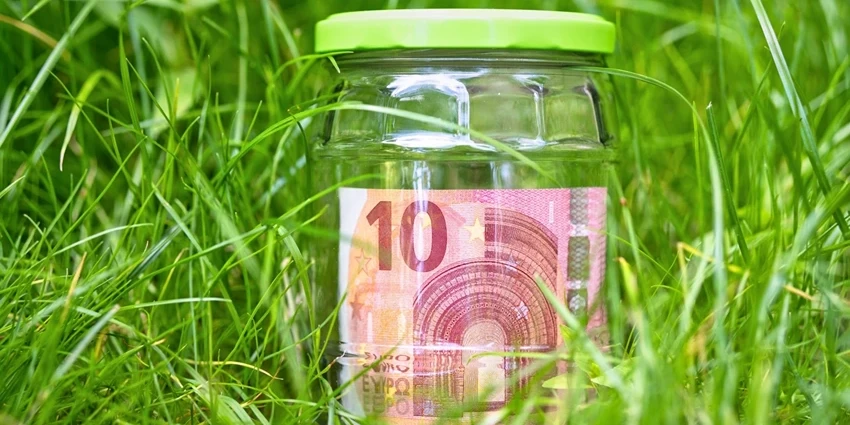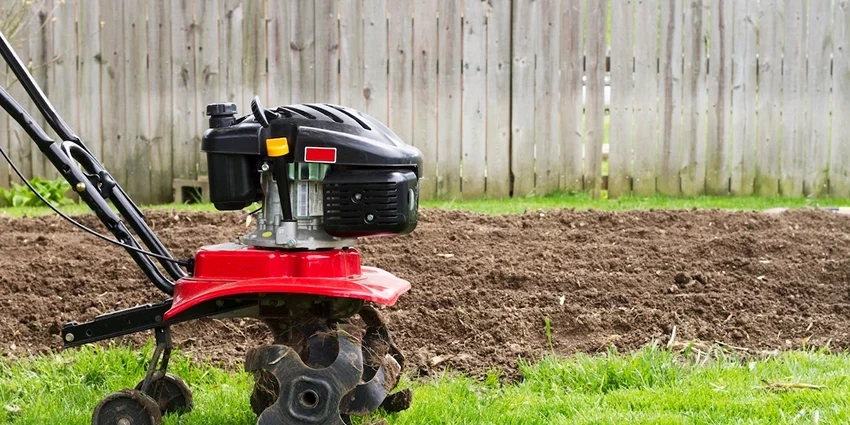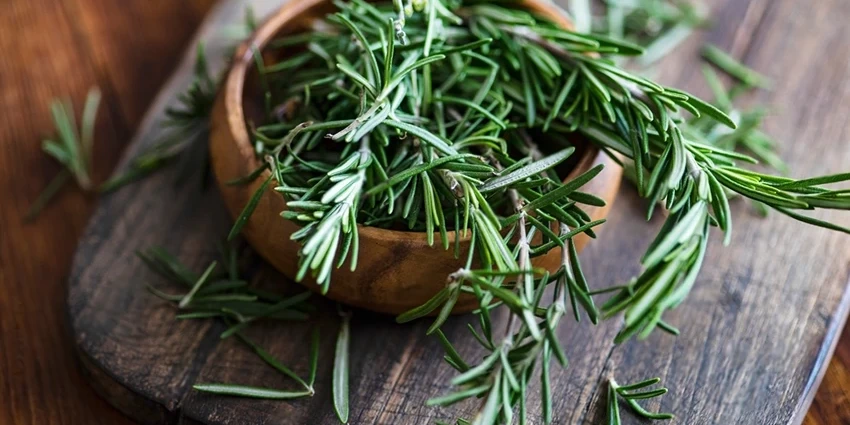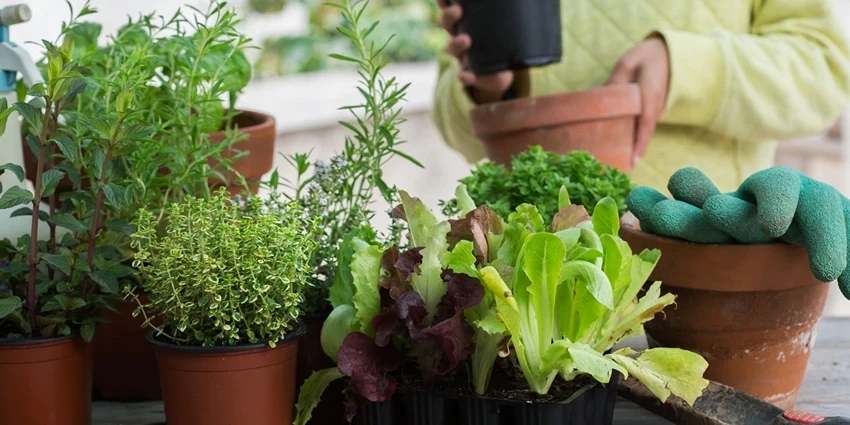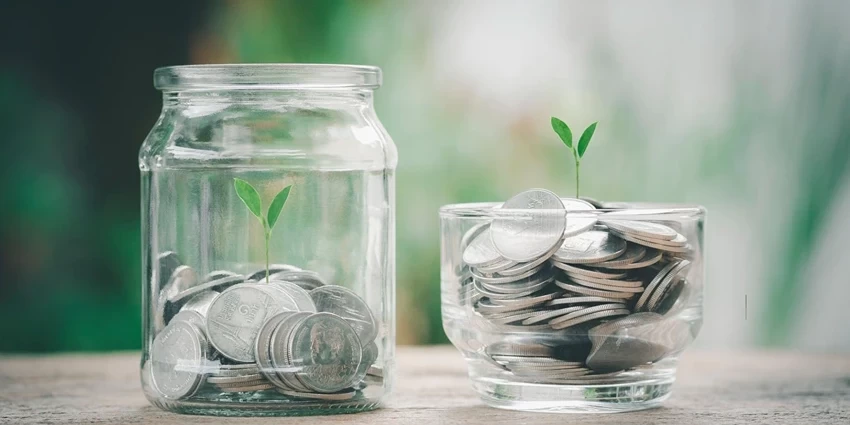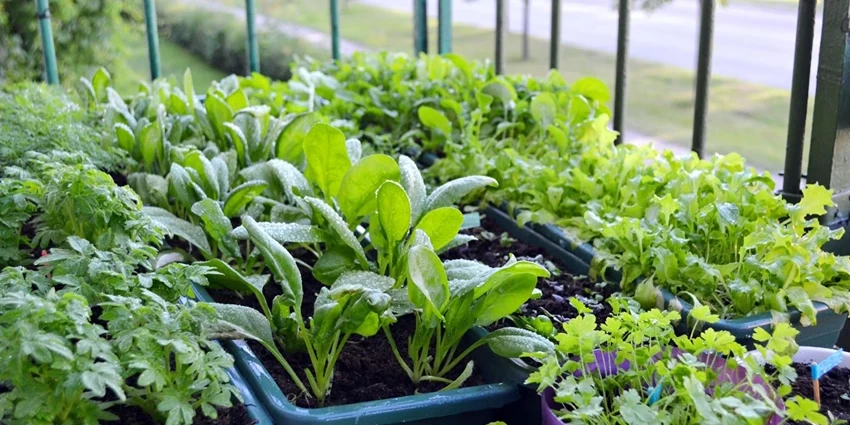All products were chosen independently by our editorial team. This review contains affiliate links and we may receive a commission for purchases made. Please read our affiliates FAQ page to find out more.
Home » Gardening Methods » Herb Gardening on a Budget
Gardening has long been a cherished pastime, offering a blend of physical activity, mental relaxation, and a tangible reward in the form of fresh produce or blooming flowers. However, the perception that gardening requires a significant financial investment has deterred many. The truth is, cultivating a lush herb and vegetable garden doesn’t have to strain your wallet. With a bit of creativity and DIY spirit, you can create a thriving garden on a budget.
Register for our latest in-depth reviews and product round-ups from the experts.
Enter your email address below to receive our monthly review emails.
By entering your details, you are agreeing to our terms and conditions and privacy policy. You can unsubscribe at any time.
Selecting Cost-Effective Containers
When it comes to container gardening, the container itself is as crucial as the plants it holds. The good news is that almost any container can be transformed into a plant pot, provided it offers enough space for the plant to grow and has adequate drainage.
- Repurposing with Purpose: Look around your home for items that can be repurposed. Old buckets, jars, and even furniture can be converted into unique planters.
- Drainage is Key: Ensure that whatever container you choose has holes at the bottom or find a way to create them to prevent waterlogging.
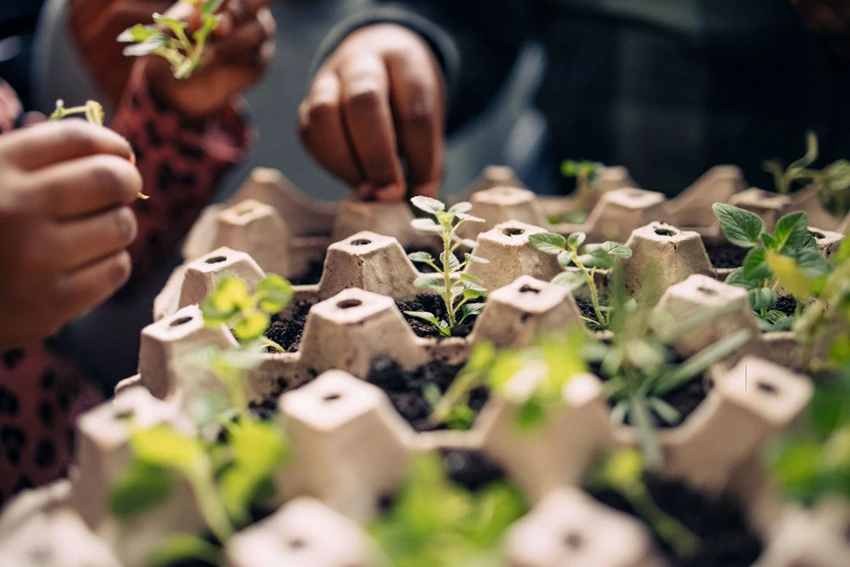
Table: DIY Container Ideas
| Household Item | Conversion Tip | Plant Suitability |
| Buckets | Drill holes in the bottom | Tomatoes, Peppers |
| Wooden Crates | Line with plastic with holes | Herbs, Lettuce |
| Old Tires | Stack for deep-rooting plants | Potatoes, Carrots |
Choosing the Right Soil Mix for Budget Gardening
Soil is the foundation of your garden, and creating the right mix can be done inexpensively with a bit of know-how.
- DIY Soil Mixing: Combine garden soil, compost from the best compost bins, and perlite or sand to create a well-draining, nutrient-rich mix.
- Composting: Start a compost pile with kitchen scraps and yard waste to create a free, rich soil amendment.
Table: Soil Mix Ratios
| Material | Quantity | Benefit |
| Garden Soil | 60% | Structure |
| Compost | 30% | Nutrients |
| Perlite/Sand | 10% | Drainage |
Affordable and Low-Cost Plants for Your Garden
Selecting the right plants and tools like the best garden shredders can make all the difference in a budget garden.
- Herbs: Many herbs like basil, cilantro, and parsley are easy to grow from seeds and can be used in a multitude of dishes.
- Vegetables: Choose high-yield vegetables like tomatoes, peppers, and leafy greens for a bountiful harvest. For those new to vegetable gardening, our vegetable garden for beginners guide offers comprehensive tips to get started. For those interested in diversifying their vegetable garden, consider exploring heirloom vegetable gardening.
Table: Seed Starting Guide
| Plant | Germination Time | Harvest Time |
| Basil | 5-10 days | 3-4 weeks |
| Tomatoes | 6-14 days | 60-80 days |
| Lettuce | 2-15 days | 30-45 days |
DIY Techniques for Herb Gardening on a Budget
Embrace the DIY ethos to save money and add a personal touch to your garden.
- Propagation: Learn to propagate herbs from cuttings. It’s simple, and you can often get cuttings for free from fellow gardeners.
- Natural Pest Control: Use natural pest deterrents like marigolds or make your own insecticidal soap with household ingredients.
Table: Natural Pest Deterrents
| Pest | Natural Deterrent | Application |
| Aphids | Insecticidal soap | Spray on leaves |
| Slugs | Coffee grounds | Sprinkle on soil |
Maximizing Space and Resources in Container Gardening
In a small space, efficiency is key. Vertical gardening and companion planting can maximize your yield without requiring extra square footage. For those interested in expanding their gardening indoors, our guide on Indoor Vegetable Gardening offers valuable insights.
- Vertical Gardening: Utilize vertical space with hanging baskets, wall planters, or trellises.
- Companion Planting: Plant compatible herbs and vegetables together, using tools like cordless drills for setup, to save space and benefit from their mutual interactions.
Table: Companion Planting Guide
| Plant A | Plant B | Benefit |
| Basil | Tomato | Improves flavor & repels pests |
| Carrots | Lettuce | Optimizes space & soil usage |
Watering Solutions for Cost-Effective Gardening
Water is a precious resource, and saving water equates to saving money.
- Rainwater Harvesting: Collect rainwater in barrels or buckets to water your garden for free.
- Mulching: Use organic mulch to retain soil moisture and reduce the frequency of watering.

Table: Water Conservation Tips
| Method | Implementation | Benefit |
| Rain Barrels | Place under downspouts | Free water supply |
| Mulching | Cover soil with organic matter | Reduces evaporation |
Low-Cost Nutrient Solutions for Your Plants
Nutrients for indoor herb gardening don’t have to come from expensive fertilizers. There are plenty of low-cost or free options that can provide your indoor herbs with the necessary sustenance.
- Homemade Fertilizers: Use banana peels, coffee grounds, or eggshells as fertilizers.
- Green Manure: Grow cover crops like clover or alfalfa, and use the best garden spades for soil preparation.
Table: Homemade Fertilizer Guide
| Ingredient | Nutrient Provided | Application |
| Banana Peels | Potassium | Bury in soil near roots |
| Coffee Grounds | Nitrogen | Sprinkle on soil surface |
| Eggshells | Calcium | Crush and mix into soil |
Pest Control on a Budget
Pests can be a nuisance, but there are economical ways to keep them at bay without resorting to costly chemicals.
- DIY Pest Sprays: Create sprays using neem oil or dish soap diluted with water.
- Physical Barriers: Use netting or row covers to physically block pests from reaching your plants.
Table: DIY Pest Control Recipes
| Ingredient | Pest Targeted | Recipe |
| Neem Oil | General | 2 tsp neem oil + 1 liter water |
| Dish Soap | Aphids, Mites | 1 tbsp dish soap + 1 liter water |
DIY Maintenance Tips for Herb and Vegetable Gardens
Regular maintenance is key to a healthy garden, but it doesn’t have to be labor-intensive or expensive.
- Weeding: Stay on top of weeding by doing a little each day; it’s free and prevents competition for nutrients.
- Pruning: Learn to prune your plants to encourage growth and increase yield.
Table: Pruning Guide
| Plant | Pruning Time | Method |
| Basil | Before flowering | Pinch off the top set of leaves |
Best Practices for Harvesting Herbs and Vegetables
Harvesting at the right time is crucial for the best flavor and longevity of your produce. Here’s how to get it right:
- Herbs: Harvest in the morning after the dew has evaporated but before the sun is at its peak.
- Vegetables: Pick vegetables when they are firm and vibrant in color; this is when they are most nutrient-dense.
Table: Harvest Timing Guide
| Plant | Harvest Sign | Best Time to Harvest |
| Basil | Full leaves, before flowering | Morning |
| Tomatoes | Deep color, firm feel | When fully colored |
| Lettuce | Leaves 4-6 inches long | Morning, before heat |
Creative and Cost-Effective Ways to Use Your Garden’s Yield
Your harvest can go beyond the table. Here are some innovative ways to use your garden’s produce:
- Herb Infused Oils: Use your herbs to create flavored oils for cooking.
- Preserving: Can, freeze, or dry vegetables for long-term storage.
Table: Preservation Methods
| Method | Suitable For | Shelf Life |
| Canning | Tomatoes, cucumbers | 1-2 years |
| Freezing | Peppers, berries | 6-12 months |
| Drying | Herbs, beans | 1 year |
Seasonal Considerations for Herb and Container Gardens
Gardening is a year-round activity. Here’s how to make the most of each season:
- Spring: Start seedlings indoors to get a head start on the growing season.
- Summer: Focus on watering and pest control during the hotter months.
- Autumn: Harvest and prepare your garden for the colder months.
- Winter: Plan next year’s garden and start some indoor herbs.
Table: Seasonal Gardening Activities
| Season | Activity | Purpose |
| Spring | Seed Starting | Early growth |
| Summer | Regular Watering | Plant health |
| Autumn | Mulching | Protect soil |
| Winter | Planning | Next season prep |
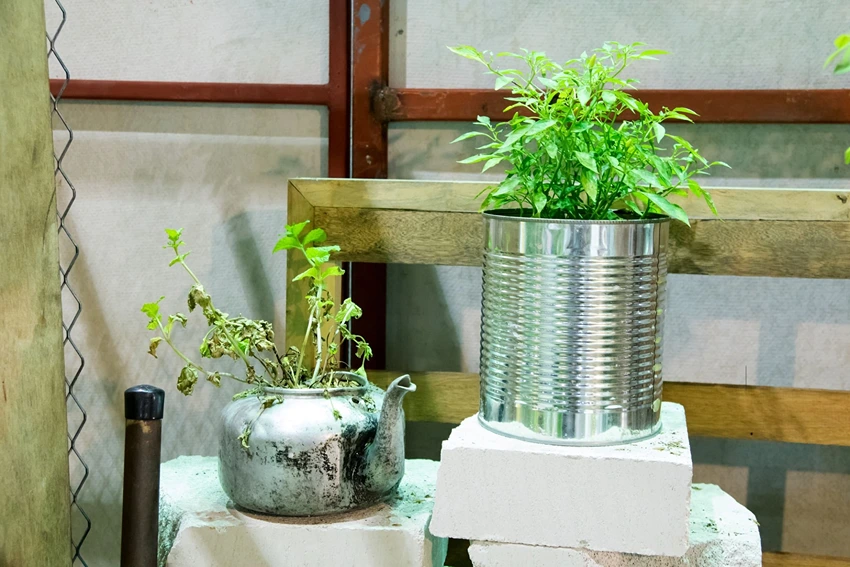
Upcycling Items for Garden Use
Before you throw something away, think about how it could be used in your garden:
- Plastic Bottles: Cut into planters or use as mini-greenhouses.
- Pallets: Turn into plant stands or vertical gardens.
Table: Upcycling Ideas
| Item | Garden Use | Benefit |
| Bottles | Watering reservoirs | Slow-release watering |
| Pallets | Compost bins | Organize waste |
Community Resources and Sharing for Gardeners
Tap into community resources for shared knowledge and materials:
- Seed Swaps: Trade seeds with other gardeners to diversify your garden.
- Community Gardens: Participate in shared spaces for more growing opportunities.
Table: Community Gardening Benefits
| Benefit | Description |
| Diversity | Access to a variety of plants |
| Knowledge Sharing | Learn from experienced gardeners |
Frequently Asked Questions
- Begin with seeds or cuttings from friends.
- Use homemade compost and repurposed containers.
Tomatoes, peppers, and leafy greens are all excellent choices for container gardening.
- Always look for ways to repurpose household items.
- Buy supplies in bulk or share with neighbors.
Table: FAQs on Budget Gardening
| Question | Brief Answer |
| Starting on a budget | Use cuttings and repurpose containers |
| Best container vegetables | Tomatoes, peppers, leafy greens |
| Saving on supplies | Repurpose, bulk buy, community share |
A passionate plant enthusiast on a mission to turn every space into a blooming haven. With a love for all things botanical, I'm your gardening guide, sharing quick tips, the joy of nurturing plants, and the belief that every day is a great day to garden. Join me in cultivating a thriving garden paradise—we'll sow, grow, and flourish together in this green revolution!


